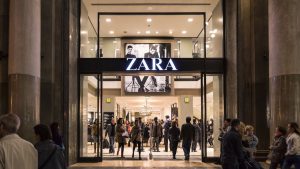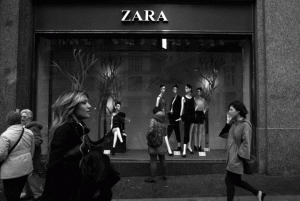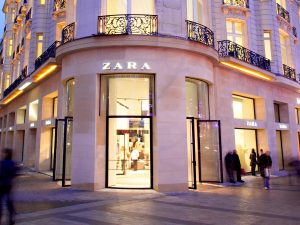Let’s talk about marketing. Needless to say that it is one of the most effective tools to greatly increase the company’s income. But even though it can increase sales, build brand awareness, do all of the companies use it?
talk about marketing. Needless to say that it is one of the most effective tools to greatly increase the company’s income. But even though it can increase sales, build brand awareness, do all of the companies use it?
At first sight we would nod positively. But let’s try to prove ourselves wrong by observing the case of the worldwide known Spanish retailing clothing brand Zara which hits the sales as of 17,2 billions a year using no advertising at all. The question is, how does it manage to succeed then?
In fact, Zara is not a separate brand. It presents itself as a fast-fashion chain of its parent company Inditex Group, the world’s largest by sales ($25.74B a year) and pioneer clothing retailer.
Zara was created in 1963 in Galicia, Spain, where its headquarters are. Its main rivals, Topshop, Mango, H&M, are way behind in terms of the number of stores opened worldwide (more than 2,200 stores in 93 countries).
Key activities
Basically, instead if setting fashion trends, Zara simply makes fast fashion, which means designing the garments that are becoming a trend settled by haute couture brands. In other words, it capitalizes on the innovation of others even quicker than a girl can wrap a neckerchief around her neck. As the environment changes dynamically, Zara’s design department works so fast that the store stock changes every two weeks. So Zara is all about speed, not innovation. Hot, nasty, persistent speed.

Customer Relationships
First and foremost, it analyses and quickly reacts to customers’ feedback. Having collected buyers’ impressions, remarks, criticism, trained store managers report this information back to the headquarters. On such base designers manufacture future clothes, which builds massive brand loyalty.
An extraordinary anti-marketing strategy
What makes Zara stand out from its competitors is spending the minimum amount of money (0.3% of sales) on advertising, so there isn’t much marketing to talk about. This in its own way makes Zara’s customers assume they won’t meet a person wearing the same item, because its clothes are simply not plastered on the billboards.
Store location plays a crucial role

Rather than spending money on advertising, Zara invests into real estate. The stores are always situated in the beautiful, historical locations, close to haute couture brands so that those who can’t afford expensive high quality brands could buy as fashionable but cheaper clothes.
So as it turned out, there is an alternative for our common, often irritating view of marketing (billboards, TV ads etc.). This is a serious consideration of customers’ feedback, the application of which to future manufactured products will be exactly what people imagine and want.
(449 words)
Reference:
Suzy Hansen, ”How Zara Grew Into the World’s Largest Fashion Retailer.” The New York Times Magazine. Nov.9, 2012 http://www.nytimes.com/2012/11/11/magazine/how-zara-grew-into-the-worlds-largest-fashion-retailer.html?action=click&contentCollection=International%20Business&module=RelatedCoverage®ion=EndOfArticle&pgtype=article
Susan Payton,”How Zara Makes Billions In Sales With Minimal Ad Spend.” Feb.,2017 https://www.referralcandy.com/blog/zara-marketing-strategy/
Lydia Dishman, ”The Strategic Retail Genius Behind Zara.” March 23, 2012. https://www.forbes.com/sites/lydiadishman/2012/03/23/the-strategic-retail-genius-behind-zara/#acbacc369d8b
Forbes Journal https://www.forbes.com/companies/zara/
Intidex Group official Website https://www.inditex.com/en/home
Zara official Website https://www.zara.com/ca/
Image 1 http://www.stylefashionista.com/this-zara-trend-is-in-right-now/
Image 2 https://www.yahoo.com/lifestyle/do-zaras-love-your-curves-jeans-fit-real-life-curves-202248436.html
Image 3 http://uk.businessinsider.com/zara-owner-inditex-first-half-results-2015-2015-9